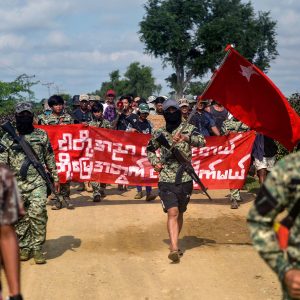
President Obama’s newfound friendship with Indian Prime Minister Narendra Modi has the world speculating about the potential strengthening of an alliance between two crucial players in the global arena. In late January, Obama became the first U.S. President to attend India’s Republic Day Parade, a celebration of India’s cultural heritage, thriving democracy, and military strength. Along with attending the function as the chief guest, Obama spent much of his visit to India discussing the U.S.-India relationship with Modi. From this discussion stemmed the development of a new alliance which may potentially change the balance of power in international politics.
This new relationship may come as a surprise to many, as India has followed a foreign policy of nonalignment for the past several decades. This approach was first adopted by India’s first Prime Minister Jawaharal Nehru in 1954 as a response to Cold War alliances. Through this policy, Nehru sought to develop India independently and to avoid entanglements with other nations that could give rise to strife and war. Given India’s historical adherence to a foreign policy of nonalignment, it is only natural that much of the Indian population and the world are stunned by this latest evolution.
Even recently, India and the United States have been far from friends. Just twelve months ago, tensions surged between the two after Devayani Khobragade, an Indian Consular Official, was deported from the U.S. to India after being arrested for visa fraud charges. India perceived this as a national insult and it looked as if cordial relations between the two countries were at an end. Furthermore, Modi has had spotty personal ties with the United States. His relations with the U.S. have hung in the balance since 2002, when many suspected his involvement in the Gujarat Riots, which caused the deaths and the displacement of thousands of Muslims in Gujarat at a time in which the region was under Modi’s jurisdiction. This, coupled with Modi’s questionable hate speech against the sizable population of 180 million Muslims in India, led to the denial of his American Visa in 2005 under the Immigration and Nationality Act, which condemns foreign government officials for any involvement in the breaching of religious freedom.
Despite all of this, the United States and India have seemed willing to overlook past transgressions in the name of a common interest—to counter China’s efforts to dominate regions beyond East Asia. India and the United States both have their reasons for opposing China’s rise to power.
India is well-aware that China has already made efforts to exert control beyond its borders by establishing ports in various South Asian Countries including Bangladesh, Sri Lanka, Pakistan and Myanmar. Furthermore, it is also planting seeds in the East African Region by building ports in Kenya and Tanzania. Given the expansion of China’s international influence, Obama and Modi have found a common interest in attempting to counterbalance China. In response to China’s clashes with neighbors in the South China Sea, perhaps one of the most contentious battlefields, Obama and Modi signed a statement reprimanding its power-hungry tactics.
Though China’s recent wave of territorial expansion in the South China Sea has been met with weary eyes in India, its current economic standing has the United States twiddling its thumbs. Between 1993 and 2005, China’s commerce with the Association of Southeast Asian Nations (ASEAN) skyrocketed from $8.9 billion to $113 billion, thirteen times its original size. In sharp contrast, America’s trade with ASEAN merely doubled from $75.5 billion to $153 billion. China’s growing trade with ASEAN nations—and the influence that has garnered them—has pushed the U.S. to present a stronger front with India against China through a series of agreements in order to balance the distribution of power in Asia.
It is also crucial to consider China’s perspective amidst the new wave of diplomatic relations between India and the United States. Adding fuel to the fire, it looks like India and the U.S.’s relationship could expand to include Japan, a nation which China considers one of its greatest adversaries. The two countries have been at odds throughout history and tensions have flared more recently over control of uninhabited islands in the East China Sea. Consequently, China was none too pleased with Modi’s proposal for the establishment of a security network between the U.S., India, Japan, and Australia. But perhaps China’s greatest concern regarding this newfound alliance is the sale of advanced weaponry to India by the United States. China may perceive this as a direct security threat and if military cooperation between the U.S. and India continues, China may find itself falling behind India, one of its greatest competitors in the region technologically and militarily.
This new partnership may have arisen out of a concern regarding China, but it may also help India’s nuclear ambitions. Having the support of the U.S. could allow India to further develop its nuclear power plants and weapons. Upon his visit to New Delhi, Obama was quoted addressing the nuclear agreement between the two democracies: “today we achieved a breakthrough understanding on two issues that were holding up our ability to advance our civil nuclear cooperation”. The President was referring to a deal between Washington and New Delhi that both advocates for India’s potential membership in the 48-nation Nuclear Suppliers Group, and also grants American companies permission to construct nuclear power plants in India once again after a five year suspension. This represents a symbolic step forward for the future of the two nations’ relationship. Modi seems to be playing all the rights cards: partnering with the United States could potentially help India become both a stronger regional and global power.




